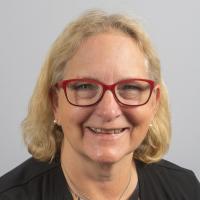Ionospheric Response to Super Storms and Its Role in Geospace Coupling
Who Will Do What:
A. Coster will oversee the research for SAPS/SED characterization and EIA. S. Zhang
will oversee the SAPS effects on the IT system, and LSTID research. L. Goncharenko
will study MLT disturbances. The MIT subgroup will meet once a month to determine progress.
What Are Our Expectations:
PI and co-PIs will coordinate closely, with Haystack meetings every month.
Consensus formulated by team meetings every 3 months. We will prioritize collaboration within and among FST teams.
What Are Our Objectives:
Geomagnetic storms produce significant changes in the ionosphere, e.g. the enhanced equatorial ionization anomaly (EIA), the mid-latitude plume of storm enhanced density (SED), and high latitudes launched large-scale traveling ionospheric disturbances. These effects are caused by a combination of storm-time electric fields and disturbance winds, e.g. the disturbance wind dynamo, the penetration electric fields, and/or the sub-auroral polarization stream (SAPS). Our objective is to evaluate which mechanism plays the dominant role, and under what conditions (size of the geomagnetic storm, season, time of storm onset, and solar activity), and how these ‘typical’ storm-time features are modified during superstorms?
What Are Our Goals:
Our goal is to illuminate the role of storm time electric fields and modified winds during ionospheric superstorms and to better understand the coupling between the magnetosphere and ionosphere and between the thermosphere, ionosphere, and mesosphere. The key to this effort is the quantification of the relative role of system drivers (electric fields, neutral wind effects) during superstorm conditions, and the quantification of coupling processes between the magnetosphere, ionosphere, thermosphere, and mesosphere.
What Are Our Milestones:
Year 1: Finalize storm case selection in coordination with FST team; collect necessary data; preparation of software and data availability path for FST team. SED plume evolution in time and space correlate to electric fields (including SAPS). Develop and refine statistical views of SAPS. Characterize EIA during superstorms. Characterize MLT disturbances at Millstone.
Year 2. Characterize TEC in SED plumes as function of solar cycle, season, etc. SAPS influence on TIDs. Characterize LSTID and EIA/IEF relation during superstorms and storms.
Year 3. Analyze convection pattern and latitudinal boundaries in electron and ion precipitation data at Millstone. Analyze TEC gradients and LSTIDs for all types of storms.
Year 4. Data/model comparison. Study of neutral perturbations in TADs/AGWs under SED influence. Correlate LSTIDs to auroral proxies. Study super EIA effect on SED plume. Study latitudinal variations in MLT response to superstorms.
A.J. Coster, L. Goncharenko, S. Zhang
COIs
A collaboration between Larisa Goncharenko, Shunrong Zhang, and Anthea Coster,
and NASA team members, especially ionospheric modelers



